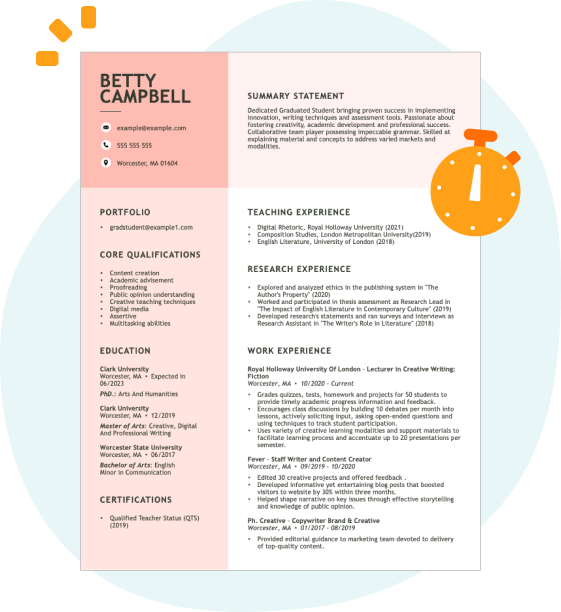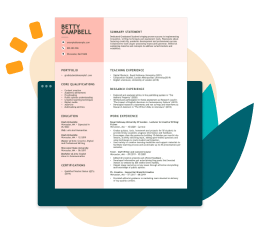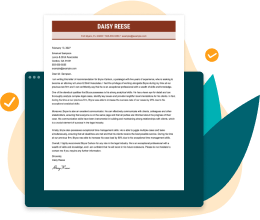Hard skills include skill in medical coding, data management systems, and patient record maintenance, ensuring accurate patient information handling.
Popular Registrar Resume Examples
Check out our top registrar resume examples that demonstrate key skills such as data management, attention to detail, and effective communication. These samples will help you highlight your achievements in a way that resonates with potential employers.
Want to build your ideal resume? Our Resume Builder offers user-friendly templates designed specifically for registrars, making the process straightforward and efficient.
Entry-level registrar resume
This entry-level resume effectively highlights the job seeker's strong organizational skills and achievements in managing student records, demonstrating their capability to improve efficiency and accuracy. New professionals in this field must showcase their ability to streamline processes and maintain data integrity, even when work experience is limited.
Mid-career registrar resume
This resume effectively showcases key qualifications, emphasizing the job seeker's leadership in improving processes and managing student records. The clear progression from admissions to registrar roles demonstrates readiness for more complex responsibilities in higher education administration.
Experienced registrar resume
This resume's work history section illustrates the applicant's extensive experience as a registrar, emphasizing their achievements in improving enrollment processes by 20% and maintaining data accuracy at 98%. The clear formatting aids hiring managers in quickly identifying key accomplishments and skills.
Resume Template—Easy to Copy & Paste
Daniel Liu
Brookfield, WI 53016
(555)555-5555
Daniel.Liu@example.com
Professional Summary
Experienced Registrar with expertise in records management to improve enrollment and student services. Proven track record of data-driven decision-making and strategic planning, delivering tangible results.
Work History
Registrar
Civic Education Institute - Brookfield, WI
July 2023 - October 2025
- Managed student records with 99% accuracy
- Improved enrollment by 20% annually
- Streamlined admissions, reducing process time by 30%
Enrollment Manager
Academic Advising Partners - Milwaukee, WI
April 2021 - June 2023
- Led a team to achieve a 15% enrollment boost
- Developed data-driven strategies for recruitment
- Enhanced student registration by 25% in FY2022
Academic Records Coordinator
University Support Services - Milwaukee, WI
October 2019 - March 2021
- Maintained a secure records system with zero breaches
- Reduced transcript processing time by 40%
- Coordinated graduation events for 500+ students
Skills
- Student Records Management
- Enrollment Optimization
- Database Management
- Team Leadership
- Strategic Planning
- Data Analysis
- Process Improvement
- Communication
Education
Master of Education Educational Administration
Illinois State University Normal, Illinois
June 2019
Bachelor of Arts Sociology
University of Illinois Champaign, Illinois
June 2017
Certifications
- Certified Registrar Professional - National Association of Collegiate Registrars
- Data-Driven Decision Making - Education Analytics Group
Languages
- Spanish - Beginner (A1)
- French - Intermediate (B1)
- German - Beginner (A1)
How to Write a Registrar Resume Summary
Your resume summary is your chance to make a memorable first impression on hiring managers. It should clearly convey how your skills and experiences align with the registrar role, showcasing your qualifications at a glance.
As a registrar, you will want to highlight your attention to detail, organizational skills, and skill in managing records. These attributes are essential in ensuring the accuracy and efficiency of student or patient information systems.
To illustrate what makes an effective resume summary for this position, let’s look at some examples that demonstrate successful strategies and common pitfalls:
Weak resume summary
I am a dedicated registrar with several years of experience in managing patient records and ensuring compliance. I am seeking a position that allows me to use my skills in an organization where I can grow and thrive. A supportive environment with opportunities for advancement is what I hope to find.
- Lacks specific examples of achievements or skills relevant to the registrar role
- Overuses personal pronouns, which detracts from professionalism and clarity
- Emphasizes personal desires rather than demonstrating how the applicant can benefit the employer
Strong resume summary
Results-driven registrar with over 6 years of experience in managing patient admissions and optimizing scheduling processes. Improved patient flow efficiency by 20% through the implementation of a new electronic scheduling system, significantly reducing wait times. Proficient in medical billing, insurance verification, and HIPAA compliance, ensuring accurate data management and patient confidentiality.
- Starts with clear experience level and core responsibilities specific to the registrar role
- Highlights a quantifiable achievement that illustrates measurable impact on operational efficiency
- Demonstrates relevant technical skills essential for the position, emphasizing knowledge of industry standards
PRO TIP
Showcasing Your Work Experience
The work experience section is important for your resume as a registrar, serving as the primary focus of your content. Good resume templates consistently emphasize this important segment.
This section should be organized in reverse-chronological order, listing your previous positions clearly. Incorporate bullet points to highlight key achievements and responsibilities in each role you’ve held.
To guide you further, we’ll present examples that demonstrate effective work history entries for registrars. These examples will illustrate what stands out and what should be avoided:
Registrar
City Hospital – New York, NY
- Checked patients in and out
- Answered phones and scheduled appointments
- Maintained patient records
- Processed insurance information
- Lacks specific employment dates to provide context
- Bullet points are overly simplistic and do not highlight any achievements or skills
- Focuses on routine tasks rather than demonstrating impact or contributions
Registrar
City Health Medical Center – San Francisco, CA
March 2020 - Current
- Streamline patient registration processes, reducing wait times by 30% through implementation of a digital check-in system
- Coordinate insurance verification and eligibility checks for over 100 patients daily, ensuring accurate billing and reducing claim denials by 15%
- Train new staff on best practices in patient communication and data entry, improving team efficiency and service quality
- Starts each bullet with dynamic action verbs that highlight the applicant's contributions
- Incorporates metrics to illustrate tangible improvements made in the role
- Demonstrates relevant skills like communication and teamwork while detailing achievements
While your resume summary and work experience are important components, don’t overlook the importance of other sections. Each part plays a role in showcasing your qualifications. For detailed guidance on perfecting your resume, be sure to explore our comprehensive guide on how to write a resume.
Top Skills to Include on Your Resume
A well-defined skills section is important for a standout resume because it highlights your qualifications and captures the attention of hiring managers swiftly.
As a registrar, it's important to focus on both hard skills and soft skills when writing your resume. Including a balanced mix of these two types of skills ensures you show employers you have the required industry knowledge to perform the job, but also the interpersonal abilities to be as efficient as possible.
Soft skills such as attention to detail, effective communication, and problem-solving are essential for fostering trust with patients and ensuring seamless collaboration within the healthcare team.
Selecting the right resume skills is important for aligning with employer expectations and passing automated screening systems. Many organizations use software to sift through applications, meaning that failing to showcase relevant skills can significantly hinder your chances of being noticed.
To ensure your application stands out, carefully review job postings for insights on which skills are most valued. Highlighting these specific abilities in your resume will not only attract recruiters but also help you navigate ATS filters effectively.
PRO TIP
10 skills that appear on successful registrar resumes
To capture the attention of recruiters, it’s essential to highlight the most sought-after skills for registrar positions. These skills are often showcased in resume examples, helping you present your qualifications with confidence.
By the way, consider incorporating relevant skills from the following list when tailoring your resume:
Attention to detail
Customer service orientation
Data entry skills
Organizational abilities
Communication skills
Familiarity with medical terminology
Problem-solving aptitude
Time management
Knowledge of health information systems
Team collaboration
Based on analysis of 5,000+ administrative professional resumes from 2023-2024
Resume Format Examples
Choosing the resume format that suits a registrar is important, as it highlights your key qualifications, relevant experience, and career advancements effectively.
Functional
Focuses on skills rather than previous jobs
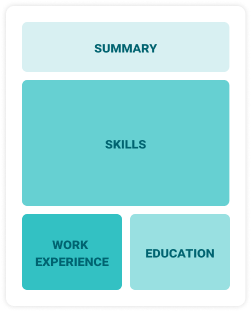
Best for:
Recent graduates and career changers with up to two years of experience
Combination
Balances skills and work history equally
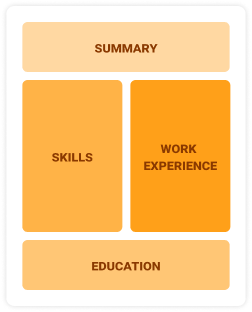
Best for:
Mid-career professionals focused on demonstrating their skills and pursuing growth opportunities
Chronological
Emphasizes work history in reverse order
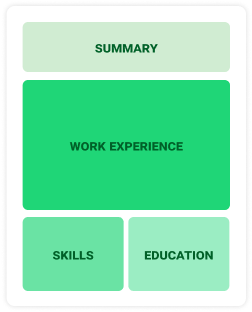
Best for:
Seasoned experts with extensive experience
Registrar Salaries in the Highest-Paid States
Our registrar salary data is based on figures from the U.S. Bureau of Labor Statistics (BLS), the authoritative source for employment trends and wage information nationwide.
Whether you're entering the workforce or considering a move to a new city or state, this data can help you gauge what fair compensation looks like for registrars in your desired area.
Frequently Asked Questions
Should I include a cover letter with my registrar resume?
Absolutely! Including a cover letter can greatly improve your application by showcasing your personality and demonstrating your enthusiasm for the position. It allows you to highlight specific experiences that align with the job requirements. For tips on crafting an effective cover letter, consider exploring our resources on how to write a cover letter. Additionally, you can use our Cover Letter Generator to create one effortlessly.
Can I use a resume if I’m applying internationally, or do I need a CV?
When applying for jobs outside the U.S., a CV is often required instead of a resume. A CV provides a comprehensive overview of your academic and professional history. For guidance on formatting and crafting an effective CV, explore how to write a CV and our collection of CV examples designed to assist job seekers.
What soft skills are important for registrars?
Soft skills like communication, organization, and problem-solving are essential for registrars. These interpersonal skills help facilitate effective collaboration with patients and colleagues, ensuring smooth administrative processes and improving overall service quality in healthcare settings.
I’m transitioning from another field. How should I highlight my experience?
Highlight your transferable skills such as communication, organization, and critical thinking when applying for registrar positions. These abilities can showcase your potential value even if you have limited experience in this field. Use concrete examples from your past roles to illustrate how these skills will improve efficiency and patient interactions in a registrar capacity.
Should I use a cover letter template?
Yes, using a cover letter template tailored for a registrar position can improve the structure of your application, organize important information clearly, and effectively showcase relevant skills such as patient management and data accuracy that are important to hiring managers.
How do I write a resume with no experience?
If you're seeking a registrar position with limited experience, consider focusing on your organizational skills, attention to detail, and any relevant coursework or internships. You can find tips on crafting a resume with no experience that emphasizes your ability to manage information accurately and showcases your willingness to learn. Remember, many employers value potential and a positive attitude just as much as experience.


